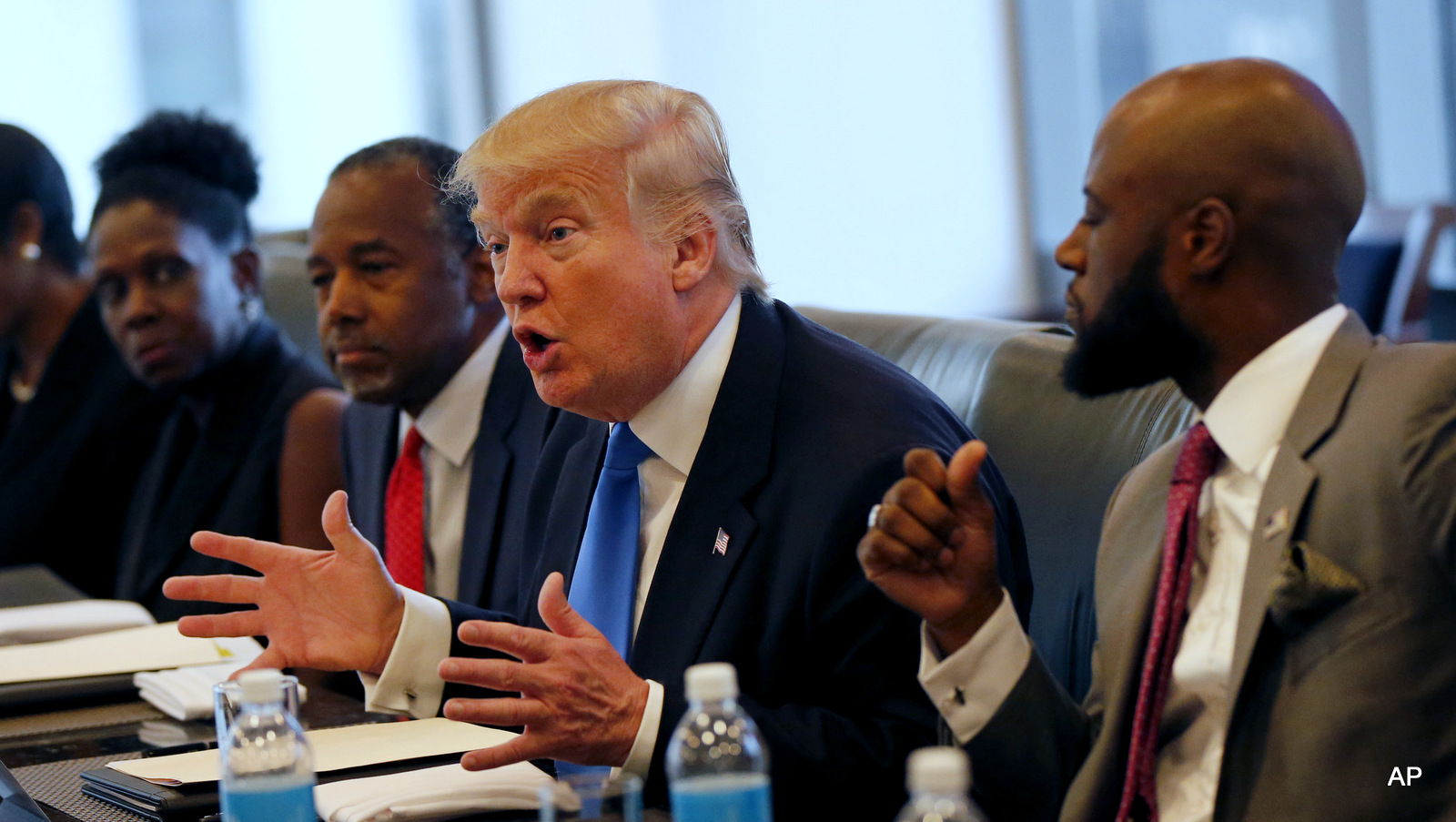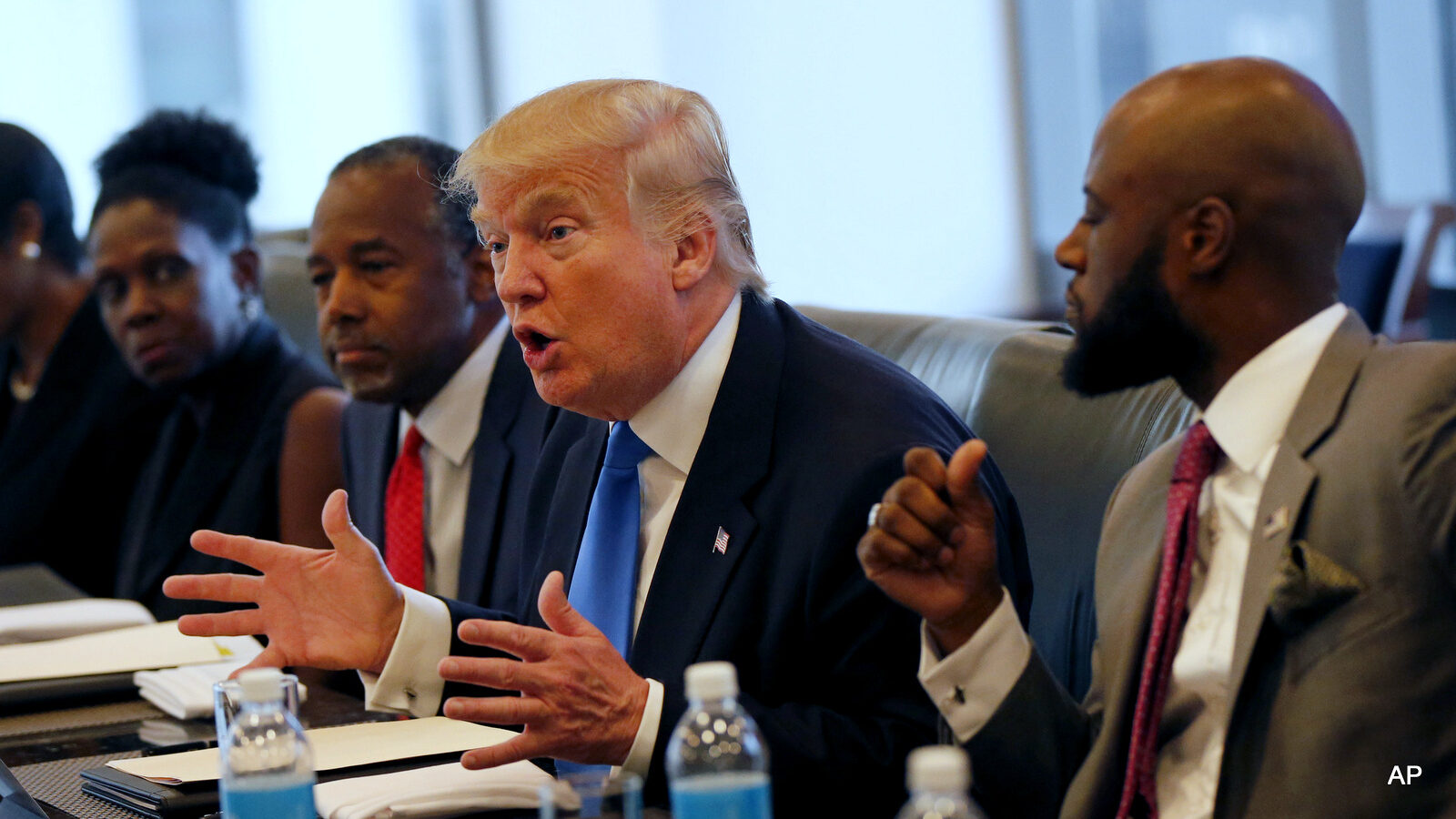
MINNEAPOLIS — Donald Trump frequently attempts to court minority voters by promising to improve conditions in America’s “inner cities.”
These appeals have not only largely failed to attract non-white voters — or, as Trump insists on referring to them, “the African-Americans” and “the Latinos” — these statements also highlight Trump’s ignorance about the modern demographics of American cities and the geographical distribution of poverty.
Trump’s statements at the presidential debate on Wednesday night in Las Vegas were typical of his oft-repeated promises to improve the lives of people living in the “inner city,” places he’s described in previous debates as “a disaster education-wise, jobwise, safety-wise, in every way possible” where people are “living in hell because it’s so dangerous.” During his closing remarks at the third and final debate, Trump said:
“We need law and order, but we need justice, too. Our inner cities are a disaster. You get shot walking to the store. They have no education. They have no jobs. I will do more for African-Americans and Latinos than she can ever do in 10 lifetimes.”
However, Alana Semuels, a staff writer at The Atlantic, wrote on Oct. 12: “There might have been a time when conflating inner cities and African Americans was appropriate shorthand, but it’s just not accurate anymore.”
According to an analysis of American Community Survey data by Elizabeth Kneebone, a fellow at the Metropolitan Policy Program at the Brookings Institution, 52 percent of black Americans in the largest urban areas actually live in the suburbs. Semuels continued:
“There are plenty of reasons that the distribution of where African Americans live has changed. As Millennials and Baby Boomers move back to urban cores, they’re pushing out longtime African American residents. Often, those residents end up in inner ring suburbs, where housing is cheaper, but where there are fewer services and opportunities for employment.”
According to Poverty USA’s analysis of data from the U.S. Census Bureau, black Americans experienced the highest levels of poverty in the United States, with 26 percent living below the poverty line. That means the majority of black Americans — 74 percent — live above the poverty line.
Still, Trump’s focus on the inner city ignores the significant problems posed by suburban and rural poverty. Poverty USA notes that “though poverty is often perceived as a problem of urban environments and inner cities, the poverty rate in metropolitan areas (15%) is actually lower than the poverty rate for people outside of metropolitan areas (17%).”
Citing drops in violent crime, rising home prices in cities, and data that shows “inner cities” are actually thriving, Southern Poverty Law Center recently noted on Twitter: “So if what we really want to talk about is deep #poverty, it can be found in rural #Appalachia as easily as the ‘inner cities.”
So if what we really want to talk about is deep #poverty, it can be found in rural #Appalachia as easily as the ‘inner cities.' pic.twitter.com/yd81vQGEXc
— Southern Poverty Law Center (@splcenter) October 11, 2016
Data from the USDA’s Economic Research Service shows that the geographic difference in the distribution of poverty is most pronounced in the South, where 21.8 percent of people in rural areas live in poverty compared to 16.1 percent of those in urban metro areas.
Although Trump has made efforts to appeal to impoverished Americans, his supporters are more likely to think ill of the poor compared to their more liberal or progressive peers. In an Aug. 14 analysis of a poll conducted by the Los Angeles Times, David Lauter, the Times’ Washington bureau chief, wrote:
“Criticism of the poor – a belief that there are ‘plenty of jobs available for poor people,’ that government programs breed dependency and that most poor people would ‘prefer to stay on welfare’ – is especially common among the blue-collar, white Americans who have given the strongest support to Donald Trump.”
He noted, “Roughly a third of self-described conservatives say that the poor do not work very hard, a view at odds with big majorities of moderates and liberals.”


